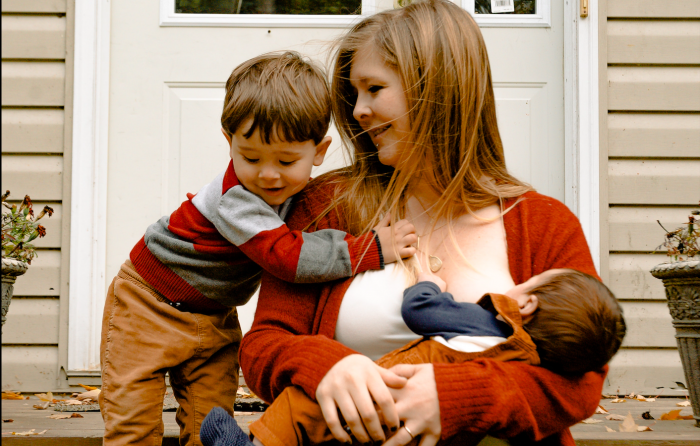Essence-led parenting starts with individuals, parents, and caregivers.
They nurture us and are the most influential relationships we have—the ones we share with ourselves and with our children.
This is about fostering a connection with oneself and being fully present in the moment.
This allows one to gain perspective on how parenting challenges can turn into learning opportunities. By noticing the emotional triggers that lie behind children’s behavior and how that affects family dynamics, one can create an atmosphere that fosters respect and rapport.
Co-designing the parent/child relationship creates trust and adds value to the family nucleus.
1. Respect our children’s individuality.
Allow children to be their own person and respect that.
Honor them for their individuality, rather than who you would like them to be. Give them room to grow into themselves without comparison or judgment.
2. Do not react.
Instead of reacting, pause, observe, and reframe.
Children tend to respond to the myriad stimuli with which they are confronted by each day.
At times children will have a big reaction. As parents, when we are aware of our child’s big emotions, our reaction is key in helping them understand and manage their overwhelming feelings.
It is important to pause and bring awareness to the present moment.
Next, observe how you are feeling at the moment and ground yourself in the environment.
Then, reframe the experience to match the life skill you would like your child to learn in the future.
3. Practice “parent-ship.”
Parent-ship is the way we relate to ourselves, our parents, and our children. It encourages parents to be aware of previous parenting patterns and disrupting them. It requires a mindful attitude toward self-healing to support a relationship.
4. Model healthy habits.
The best way to teach your child is by example.
Since younger children tend to mirror behaviors, attitudes, and habits they are exposed to in their family nucleus, it is vital for parents to model the life skill they would like their child to adopt.
Simply put, if you want to teach your child kindness, be kind.
5. Actively listen to your children.
We all like to be heard and so do children.
Listen to your child attentively with no interruptions, validate their emotions, and soothe their anxiety.
Seek understanding and empathy.
6. Practice self-care.
Showing your own value of self is a critical message to your child.
Showing kind regard for yourself will also provide a positive role model for your children that they, too, are important people.
Caring for yourself looks different as a parent than it did before having children. Still, it remains vital for you to take a moment during the day to nurture yourself, whether that be a candlelit bubble bath, coffee with a friend, or meditation.
Take that moment for yourself as a parent. Love thyself and better parenting will come more easily.
7. Co-Regulate.
Self-care is imperative to be able to regulate your child’s distress.
Co-regulation is using your presence of calm to be able to de-stress your child’s emotions. In order to achieve this, you need to regulate your emotions first, and later connect with the experience your child is living.
From the space of calmness, you help your child label the emotion they are feeling, sit with it for a while, offering warm affection and eye contact, and then narrating what occurred with a growth mindset.
8. Empathize.
Be the parent you needed at your child’s age.
Be curious to understand the faltering need behind your child’s behavior, and make sure your child feels seen, soothed, and safe.
9. Give them responsibilities and co-design.
Get the whole family to participate in decision-making at home from basic behavioral expectations, household chores, and routines. By giving children responsibilities, it encourages ownership, independence, and self-reliance.
When everyone’s voice is heard, chores around the house turn into an exercise that promotes teamwork and leadership that boosts everyone’s sense of responsibility and self-esteem.
~
 Share on bsky
Share on bsky


Read 0 comments and reply